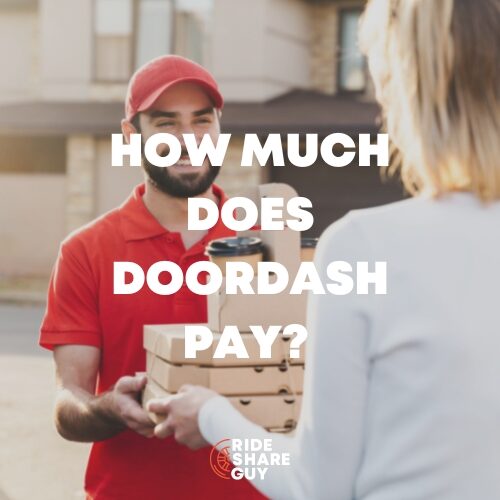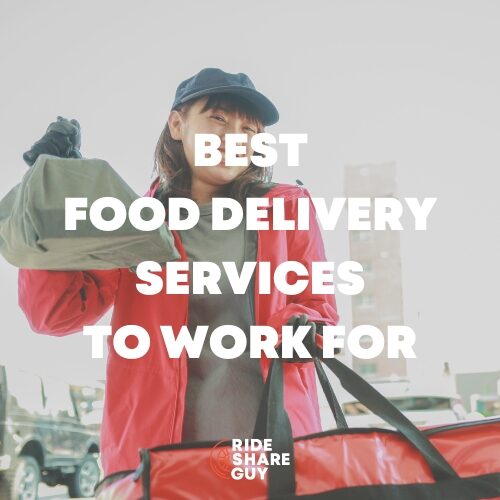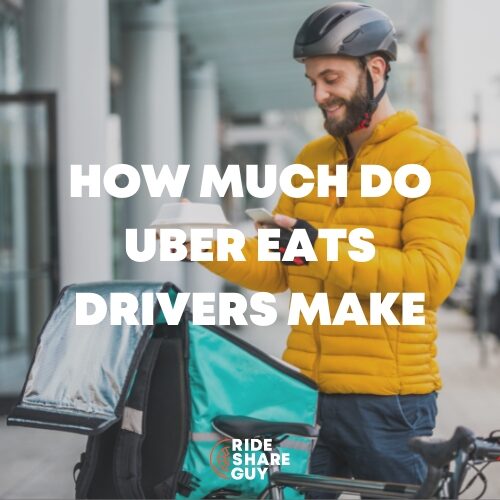Do you get tips as a delivery (DoorDash, Postmates, etc.) driver? Have you noticed something off about your delivery tips or pay after you’ve received tips? RSG contributor Dash Bridges uncovers the murky way tipping is factored into delivery pay.
As you know, there’s a murky quality to the methods by which delivery services pay their drivers. The simple ‘flat fee + 100% of tips’ policy from the Days of Yore (i.e. Spring 2017) is gone. It’s been replaced by guaranteed minimums, mysterious pay boost algorithms and the faint hope of a payment over and above what’s promised. The recent outrage over the $0.80 Instacart payout incident brought a lot of scrutiny to these methods. Certainly, these payment policies sow distrust to the relationship between driver and services.
Most of this scrutiny centers on the tipping portion of payments. Americans understand tipping as an act that supports labor over and above their compensation for the job. Cabbies earn a certain percentage of the fare, but a tip goes fully into their pocket. We assume wait staff, hotel employees and baggage handlers all make consistent hourly wages, and our additional cash all goes into their pockets, independent of their employer compensation.
However, how does tipping truly work when it comes to delivery companies? How are people encouraged to tip, at all, and how do those tips get distributed to delivery drivers? I took a look at the different delivery apps just to see how delivery apps do (or don’t) encourage people to tip.
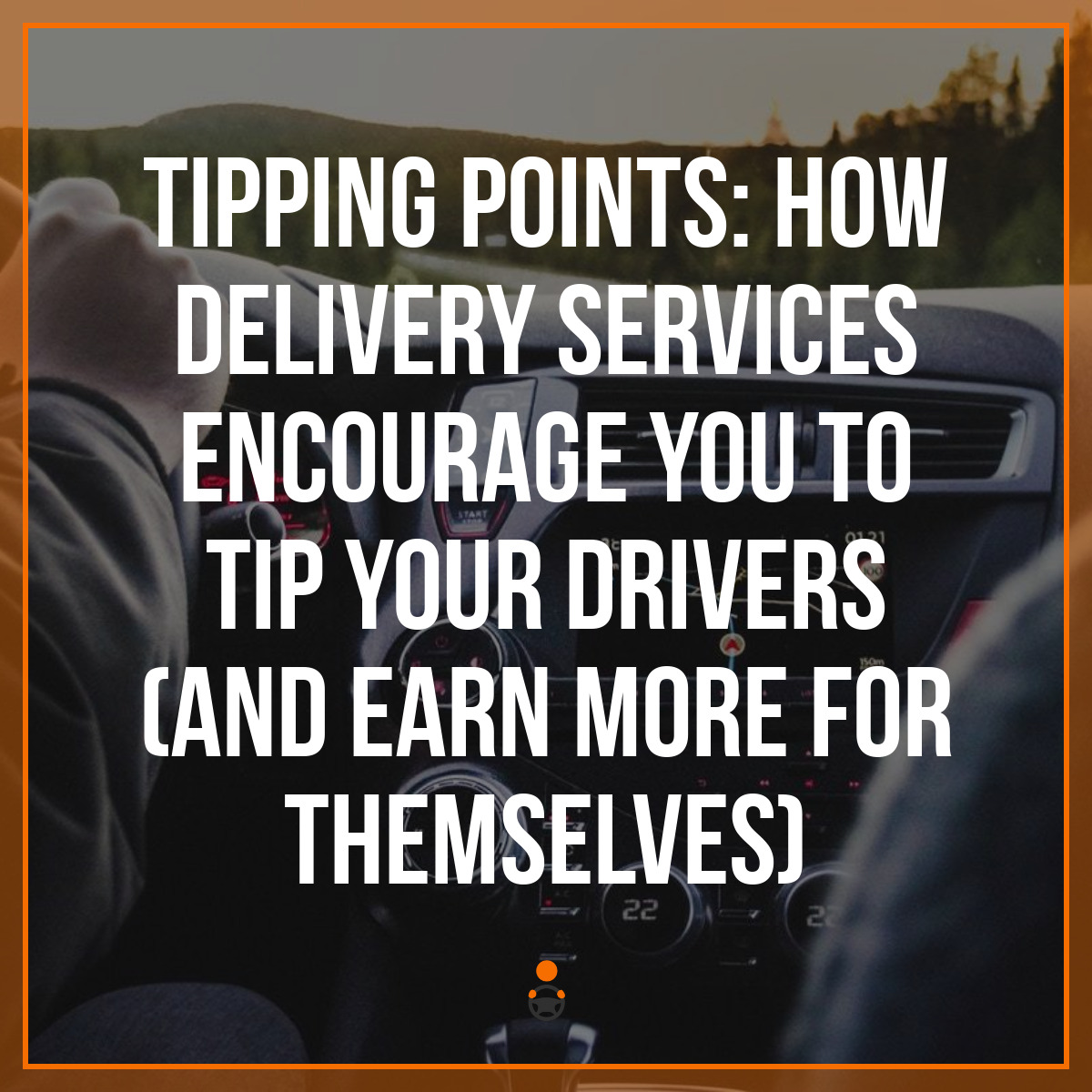
Mobile-app delivery for independent contractors is different from many other industries. DoorDash and Instacart notify you (the deliverer) of a guaranteed minimum payment before you confirm your delivery. These services want to receive as much revenue as possible to minimize their payment exposure. Customer tips are particularly valuable because if a driver agrees to a delivery payment that’s completely covered by a generous tip, hey, more cash for the service! While you’ll always earn that guaranteed money (tipped or not) and you’ll ALWAYS take home 100% of your tips, sometimes you might make 100% of tips + a lousy pittance.
As a part-time Dasher, I can confirm that tips are IMPORTANT! Here’s an example of the high-level breakdown DD provides us for a specific week’s earnings:

You can see that in the middle of this particular week, $105 of my $219 dollars earned were via tip. I then checked my previous six weeks. Here’s what I found:
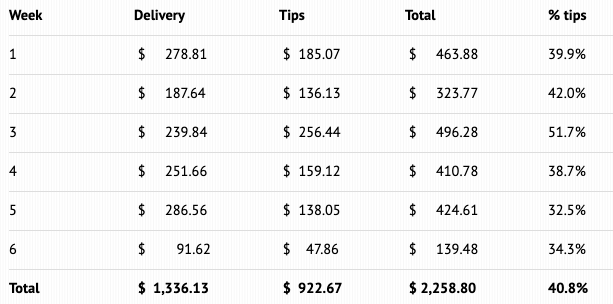
About 41% of my earnings come from tips. And if services are utilizing tips to decrease their own obligations, THEY want you to tip also.
Recently I used several food delivery services to better understand their tip-encouragement methods. Let’s see how various companies do this on food delivery:
Tipping on Postmates
My first foray into food delivery started with a local burger place I’ve picked up from a few times, but never actually visited as a customer.
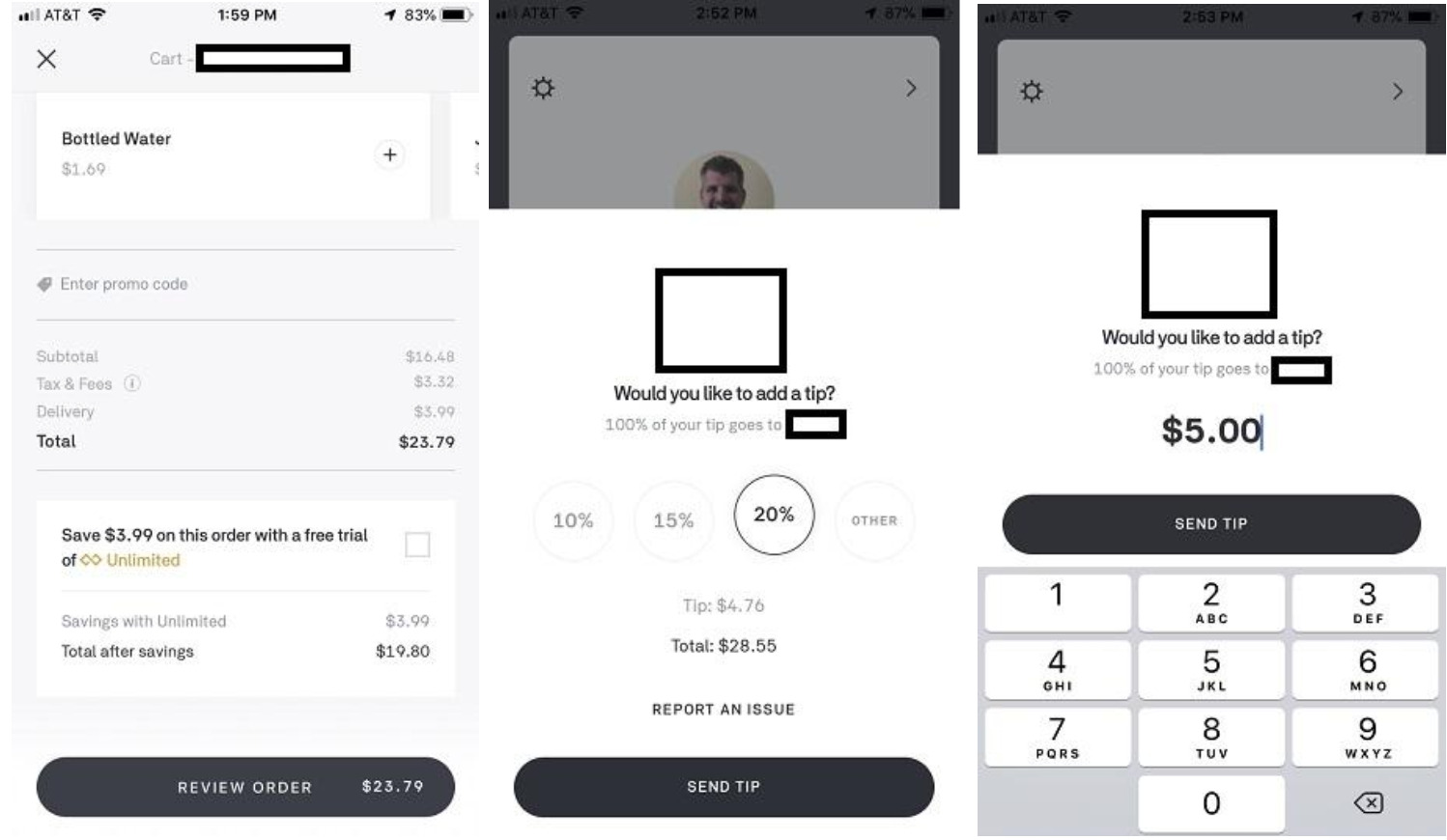
I proceeded through my entire order and payment without seeing a tip screen. It wasn’t until AFTER I physically received my order at the door that Postmates alerted me to a tipping option. It had four options, 10%, 15%, 20% and Other, defaulting at 20%.
I stayed in touch with my driver. He was nice enough to share a screenshot of his earnings:
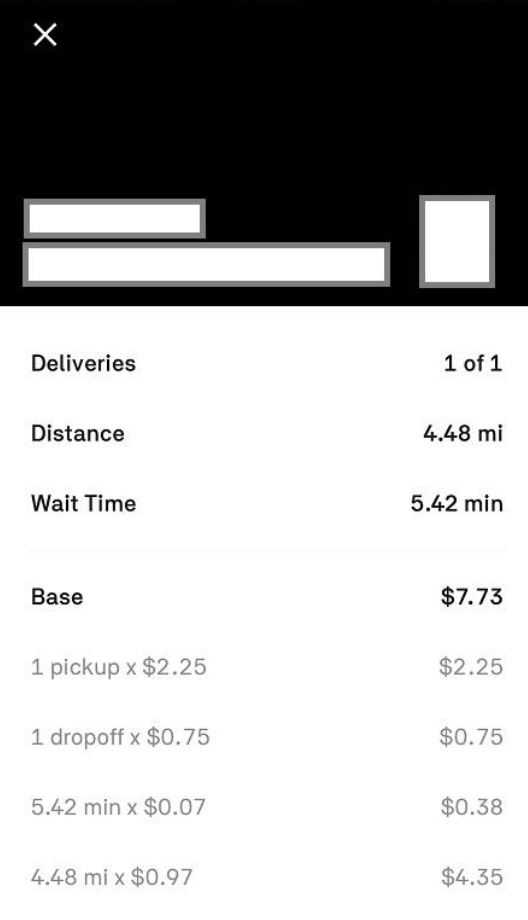
Let’s hear it for transparent payouts! The driver told me the pickup and drop off fees were pretty consistent, around $3. Of course, the waiting and mileage are variable. He also told me that he wouldn’t receive notice of the tip until the next day. The $7.73 base pay plus my $5.00 tip helped him earn $12.73. Great for a single order! He said his deliveries average about $5.70, and he doesn’t get a lot of tips. “Look at who is using the platform… It’s students.” he said.
It’s also interesting to note that Postmates paid him $7.73 but only charged a $3.99 delivery fee and $3.32 for tax and fees. So Postmates lost money on this order.
Tipping on Grubhub
The next day I ordered through Grubhub.
In a slight variation from Postmates, the Grubhub order provided tip options when I placed my order. The options were 15%, 20%, 25%, 30% (30%? Really?), and custom. The app defaulted to 20%.
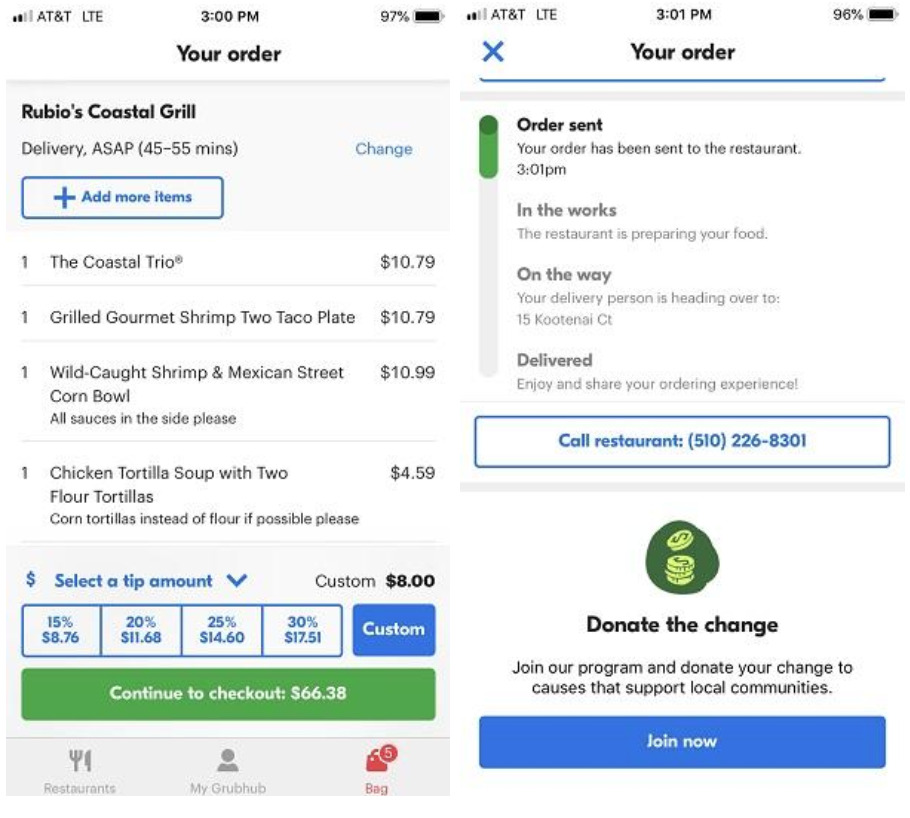
Tipping on Uber Eats
Next, my girlfriend, my expanding stomach, and I ordered a delicious pancake breakfast from Uber Eats.

Uber Eats also suggests tipping during checkout, though in round dollar amounts, not percentages. I spoke to my driver about her order and she told me she made $4.27 from Uber and I tipped $6.00. That means UE retained $0.72 of the delivery fee, on top of the 30% cut they charge restaurants ($33.48 x 30% = $10.04). So who ends up with what?
UberEats: receives $21.03 ($4.99 booking + $10.04 restaurant fee + $6.00 tip). Pays $10.27 ($4.27 delivery + $6.00 tip), and nets $10.76.
Driver: $10.27 ($4.27 delivery + $6.00 tip)
Restaurant: $23.44 (70% of $33.48 food price)
My brief driver career with Uber Eats (delivery only) sounded similar to this experience… pathetic pay from corporate.
Tipping on DoorDash
Prior to this experiment, I had only ordered DoorDash once, back before I started Dashing myself.
DoorDash shows you the order and total, and once you continue to the next screen, it suggests round dollar tips of $3, $4, $5, or other, defaulting onto $4. But remember, DoorDash uses tips to subsidize what they pay workers so it’s best to tip in cash. This time I decided to tip $5 cash, nothing through the app.
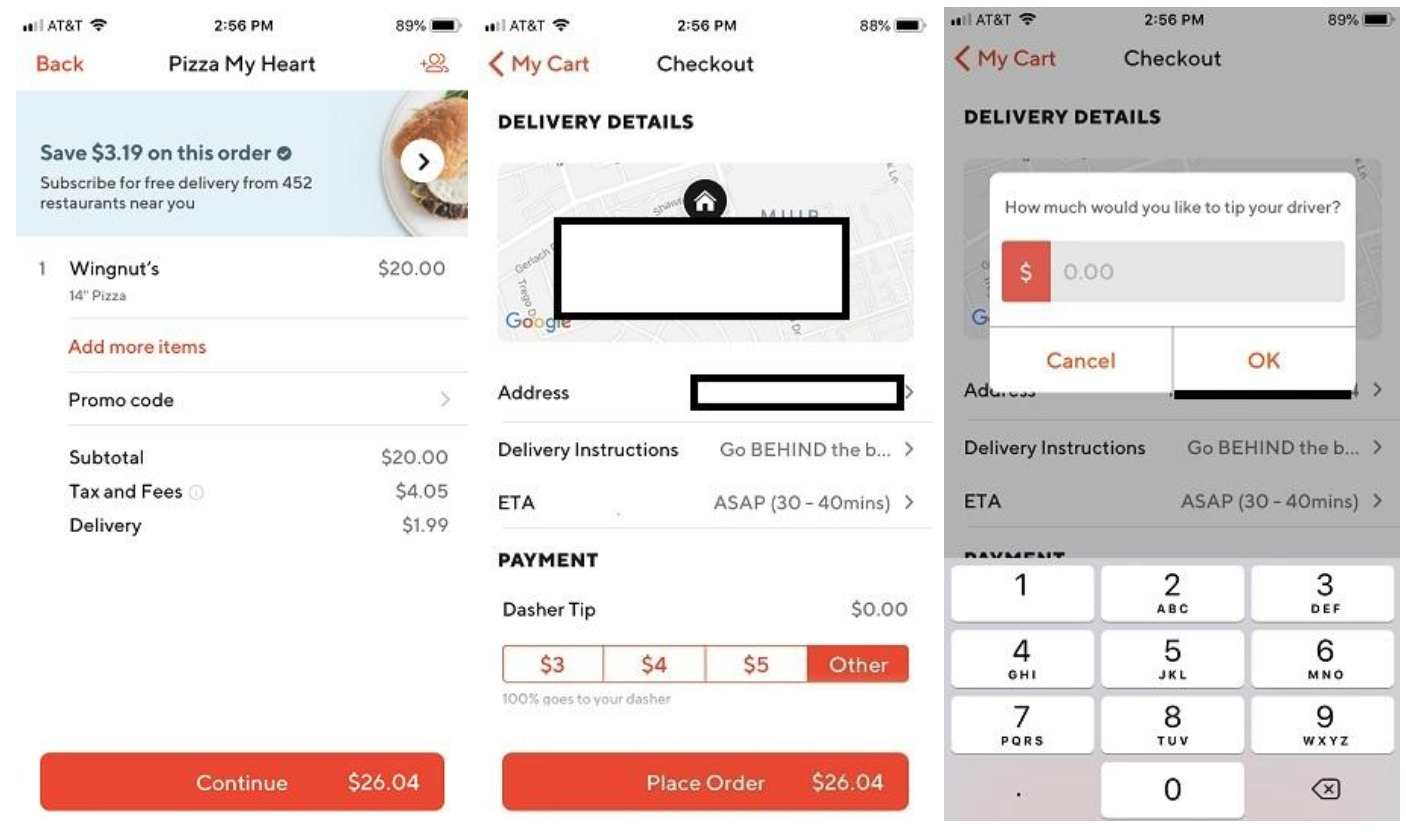
As a driver, I appreciate that DoorDash makes you confirm your cheap, no-tipping existence by making you type in ‘$0’ for the tipping portion! Perhaps that’s why DoorDash claims its customers tip 85% of the time. The driver told me he was guaranteed $6.00 for this order. In my region, this is the standalone order minimum. We’re never offered less. Indeed, he confirmed that was his DoorDash payout (my $5 cash tip brought him up to $11.00 total).
Tipping Processes on Postmates, Grubhub, Uber Eats, and DoorDash
In summary, each service has the following tipping placements and standard methods:
Postmates – After you receive your order, suggesting 10%-20% of order total
Grubhub – Before order checkout, suggesting 15%-30% of order total
Uber Eats – Before order checkout, suggesting a flat $2.00-$6.00. But you can also adjust the tip afterwards.
DoorDash – Before order checkout, suggesting a flat $3.00-$5.00
I can imagine it’s a challenge for delivery services to maximize tipping engagement. In all these cases, you’re tipping before you receive your food. Naturally, you want your tip to reflect the level of service, but you can’t do that if you’re tipping during order placement!
Overall tipping would certainly decrease if they asked for tips AFTER you received your food. First of all, you’re not looking at your phone. You’re probably eating and otherwise disengaged. You might be away from the app/site for hours, days, or in my case, 4 years. No one’s going to tip after the fact. And this is what driver’s experiences reflect with Postmates.
However, tipping is important—it’s a backdoor revenue stream, after all—and services track it. In addition to DoorDash receiving no tips on 15% of their orders, they also claim that another 45% of their orders aren’t tipped enough to meet the minimum guaranteed amount (Note: ZERO sympathy. They’re TIPS!).
So what to do about it? While all services encourage tips—which conveniently doubles as an additional revenue stream—they can’t force it upon customer. No one likes to be forced into gratuities, and customers already see their delivery charges. Seeing two charges in addition to the food charge can’t be good for the customer experience. Customer trust plays into it too. They want to know their tips are going directly to the driver, and incidents like the one with Instacart undercut customer trust. Anecdotal evidence suggests tips are down post-incident.
It’s a tricky game, because services need to maintain a good experience, even with stingy customers. That’s how they did it originally, but we drivers learned the tricks and declined orders that had low-tipping potential. I think most drivers would understand a method by which generously-tipped orders partially subsidize poorly-tipped orders, while also maintaining that fun, “Wow, I got a great tip on this one!” jackpot feeling on certain orders. But it’s impossible to know if services keep that pool of pay subsidy, or grab what they can to maximize their own revenue.
Remember that DoorDash order I mentioned above? The one where I decided to tip in cash instead of through the app? DD offered the Dasher the minimum $6.00 delivery fee. Perhaps it makes sense, as the order was $20 and the restaurant a modest 2.4 miles away.
However, that’s not the whole story. I performed an experiment. The day before, I placed the same order from the same restaurant, also mid-afternoon. A promo decreased my delivery fee by $1.99, which neither me nor the driver have any control of. But this time, I placed my $5.00 tip within the app.
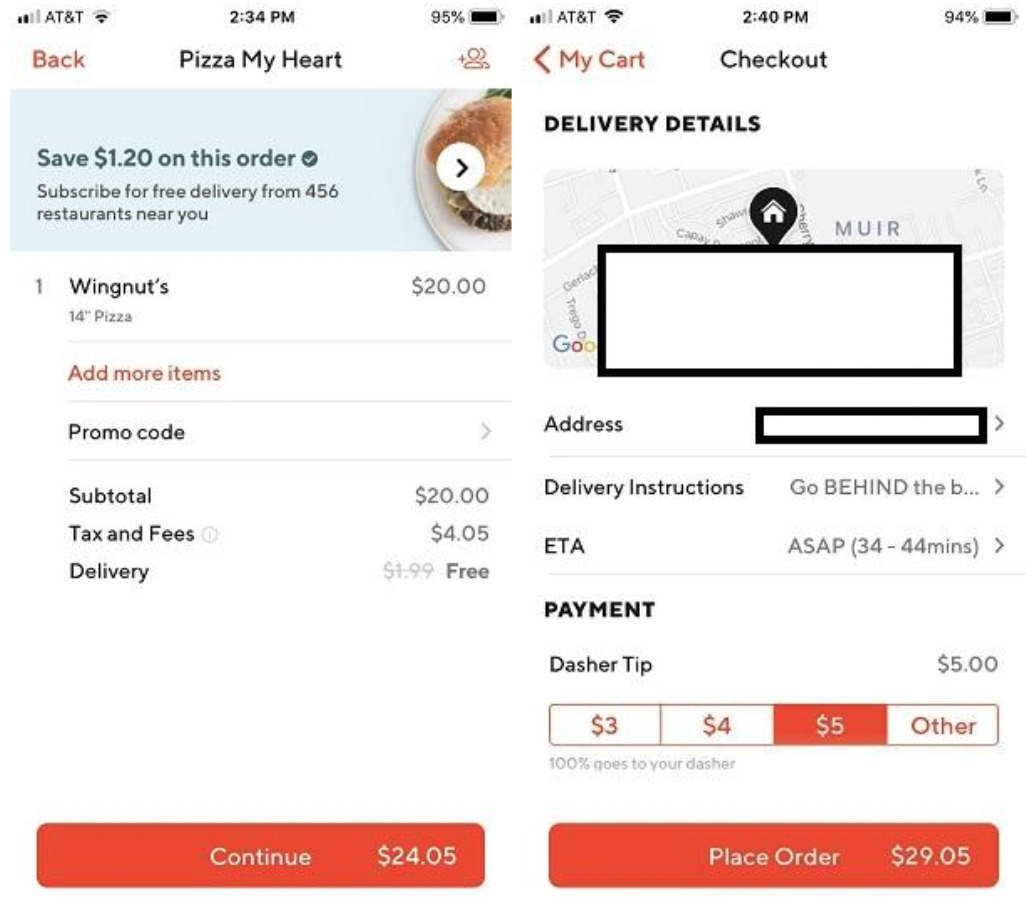
Remember, the driver who received a $0 tip through the app was paid $6.00.
The driver who received a $5.00 tip through the app was paid…come on, guess. Probably not the whole $11.00. Maybe $10.00? $9.50? $8.75?
Actual payout: $6.52. Wow.
Drive safely everyone. If you place orders yourselves, at least on DoorDash, tip in cash.
Readers, have you noticed this yourselves while driving for delivery companies or if you’ve ordered delivery? What has your experience been with tipping?
-Dash @ RSG
